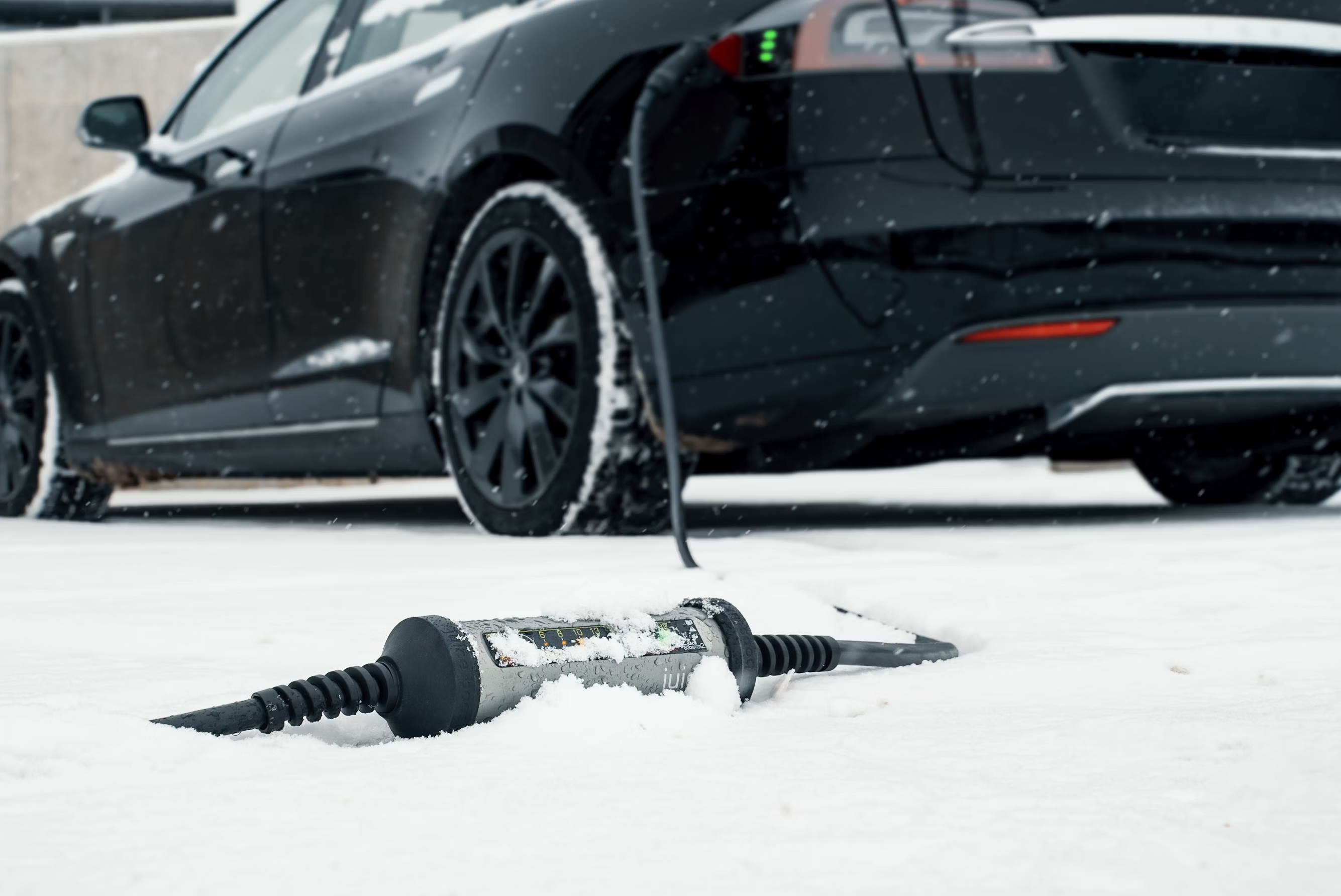
Cold winter temperatures have a unique impact on electric vehicles (EVs). Range decreases, fast-charging slows, and conserving energy becomes essential in extended traffic. Here’s why your EV behaves differently in winter.
As the first frost settles, new electric vehicle (EV) owners may be surprised to notice a sudden drop in their car’s range. Is there an issue with the battery? Has the charger malfunctioned? Relax—this is entirely normal.
While gasoline and diesel vehicles tend to experience slightly lower fuel efficiency in winter, EVs often see a much larger increase in energy consumption.
Why Electric Vehicles Use More Energy in Cold Weather
The main difference lies in heating. Traditional cars use waste heat from their engines to warm the cabin, but an EV draws power from the battery for this purpose. This uses energy that could otherwise propel the car, thus shortening the driving range.
According to the Danish Automobile Association (FDM), winter can increase an EV’s energy use by 20-30%, depending on temperature, weather, and driving conditions. And as energy use rises, range declines.
Does Preheating an EV Save Energy?
Heating the cabin is one of the biggest energy drains in cold weather. Therefore, preheating the cabin while the vehicle is still plugged in can be a smart move, especially before a long trip. This allows you to start off with both a warm cabin and a fully charged battery, maximizing your range.
In day-to-day driving, energy use per mile tends to be highest on short trips, as EVs consume the most power to heat the cabin initially. On longer drives, EVs become more efficient since they expend less energy maintaining a constant temperature compared to the initial heating phase.
The Role of Heating Systems in EVs: Basic Heaters vs. Heat Pumps
EVs typically use one of two heating systems: a simple resistor heater (sometimes referred to as a “dipper heater”) or a more advanced heat pump. The heat pump is up to three times more efficient, making it ideal for regions with longer winters, like Denmark. If you’re considering an EV, a model with a heat pump can significantly reduce energy consumption in winter. Be mindful, though, as some imported EVs may lack this feature.
Is EV Range Reduced During Winter?
Yes, EV range can decrease in cold weather due to increased energy demands. Additionally, wind and rain are more common in winter, adding to the challenge. The Danish Meteorological Institute (DMI) reports that wind speeds peak in autumn and early winter, while rainfall rises by 25% in winter. Strong winds create extra drag, especially in headwinds, while rain increases both rolling resistance and drag due to denser air.
Several other factors also affect winter range. For instance, winter tires typically have greater rolling resistance than summer tires. Also, a cold battery can regenerate less energy and must use power to stay warm.
Why Does EV Charging Slow Down in Cold Weather?
Charging speed generally remains consistent when charging at home, but public fast-charging in cold weather can vary depending on the EV model. Batteries struggle to absorb large amounts of current when cold, so fast charging may be less effective if you head straight to a charger after the car has been sitting in freezing temperatures.
EV batteries must reach a certain temperature for optimal fast charging. Some vehicles can pre-warm the battery on the way to a charger, while others may cool down the battery in hot weather. Preheating can be especially beneficial for some EVs, while others warm up naturally during highway driving.
Once charging begins, the battery heats up, and in many EVs, this shortens charging time by only 3-5 minutes even in winter.
Can an EV Keep Passengers Warm in a Traffic Jam During Winter?
With cold weather impacting battery life, you might wonder if an EV can maintain warmth during prolonged traffic jams in winter. According to a test by the German automobile club ADAC, an EV can indeed keep its cabin warm for hours, even in sub-zero temperatures. The test included a Renault Zoe (50 kWh) and a VW e-Up (32 kWh), both known for modest battery capacities.
These EVs maintained a cabin temperature of 22 degrees Celsius with heated seats on. After 12 hours, the Renault Zoe used about 70% of its battery, while the VW e-Up used roughly 80%.
FDM’s tests indicate that EVs typically use 1-2 kWh per hour to keep the cabin warm. If an EV has a battery with 50 kWh remaining, it could maintain a comfortable 20-degree temperature for 25 to 50 hours, assuming the vehicle remains stationary.
In case you find yourself stuck in traffic, it’s essential to conserve energy. Lower the cabin temperature slightly, turn off the front and rear defrosters, and minimize opening doors or windows. Selecting an eco driving mode or, if alone, a “driver-only” heating option can also reduce energy use.
If the battery does run out, many roadside assistance services offer emergency charging for EVs or will tow the vehicle to the nearest charger.
Winter Preparedness Tips for EV Drivers
Winter driving, whether in an EV or traditional vehicle, requires preparation. Bring along essentials like blankets, hot drinks, an ice scraper, a shovel, gloves, and possibly a tow rope.
